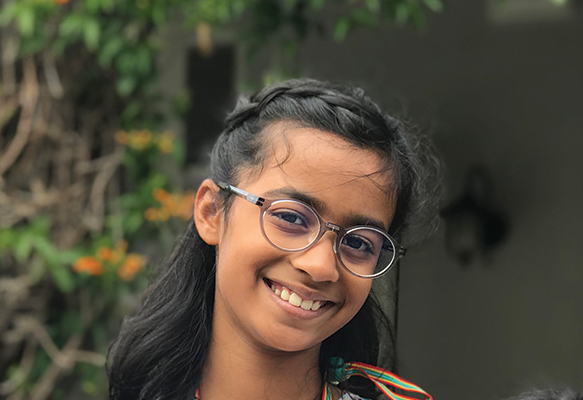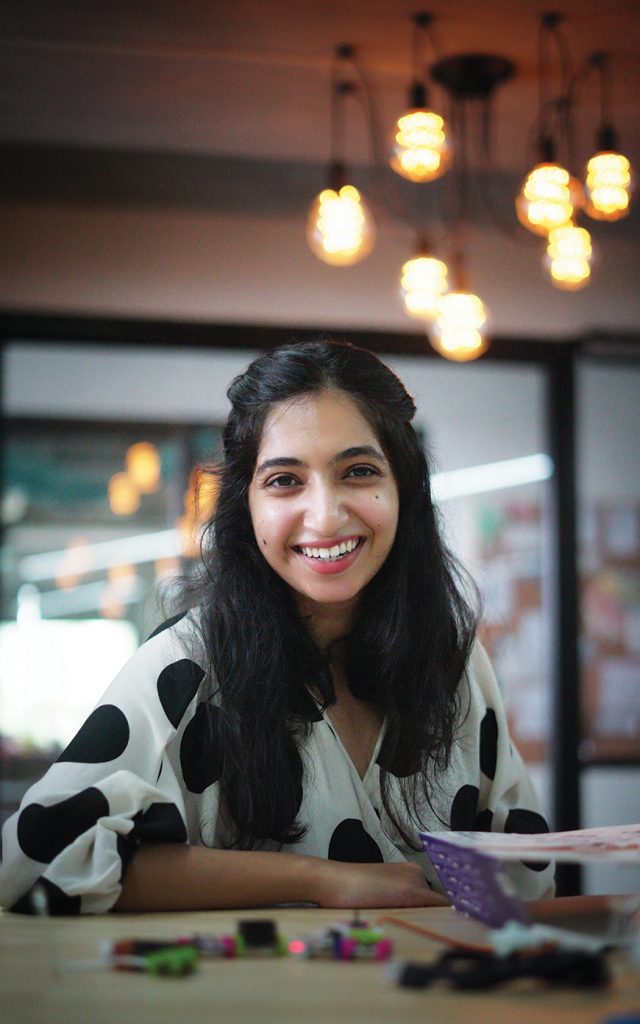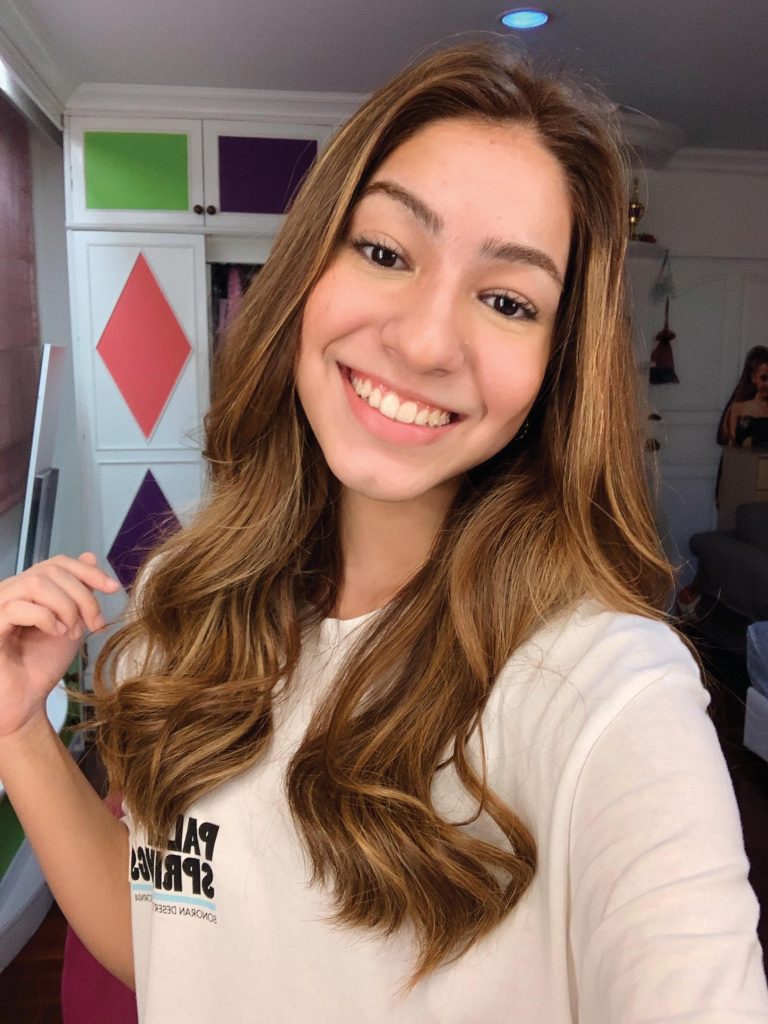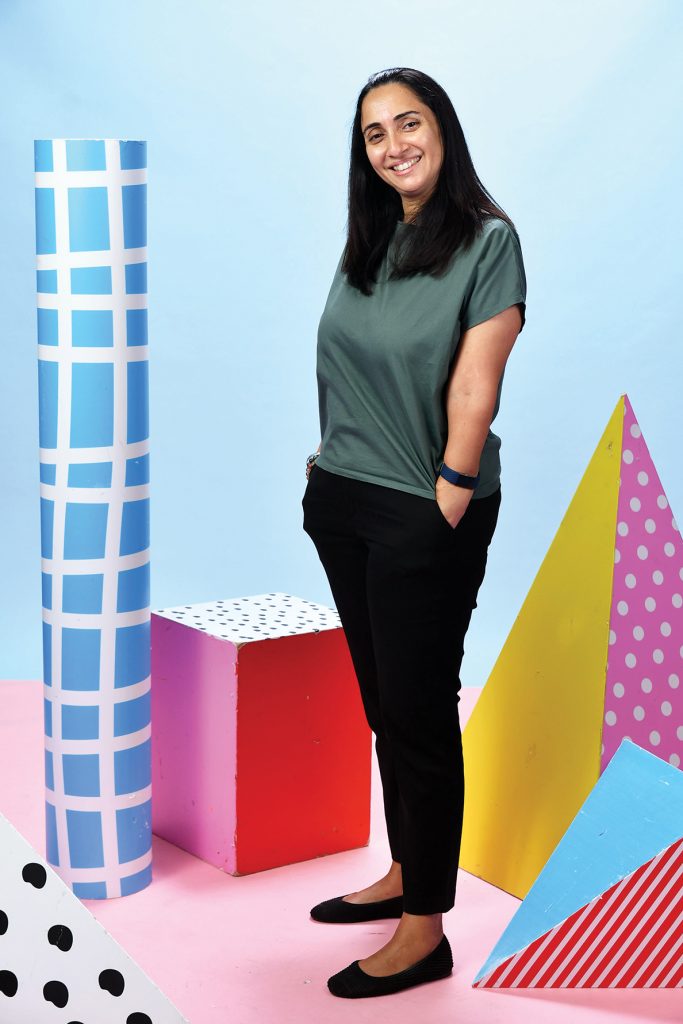What’s it been like for educators, parents, and students in this virtual reality?
By The Masala Team
The third wave of the pandemic has hit Thailand, and that means another wave of Zoom-induced eyestrain, teachers wracking their brains for ways to make their online classes engaging and innovative, and parents listening to their kids reciting their ABCs while they themselves WFH. But what has it really been like for all who’ve ventured into, and conquered, the virtual world of online learning? Masala has asked educators, parents, and students from the community to weigh in.
ANANYA K.
Year 5 student
“It is now my third experience of online learning and this time around, for both students and teachers, it was faster and everyone knew exactly what to do. My biggest challenge, however, is easily the workspace. At home there are more distractions, and we’re spending our entire time with our family; family time is great, but do any of you have family members that just keep getting calls, or younger siblings that keep bugging you to play with them?
“I found it harder to actively participate in online classes as being physically there to raise your hand is so much easier compared to doing it virtually. When online, you occasionally end up with someone asking the same question as you, and we often end up cracking up. Moreover, some subjects such as ICT, are almost the same as how they were done in school, but subjects like P.E. are harder to adapt to. I personally love P.E., but online, it’s lost all its fun.
“When learning online, sometimes you just have to give yourself a break and stop for a few moments. I recommend taking a deep breath, looking out into the horizon, and giving yourself a treat of some sort (usually chocolate for me), and telling yourself to keep going.”
JASLEEN AHUJA SACHDEV
Mother of a Year 7 student at Tara Pattana International School (TPIS)
“Online learning has brought many new experiences in our son’s as well as our lives. One of the upsides of online learning is that we all have become friendlier with technology, such as Google Classroom, Google Meet, and other study apps and websites. The first couple of days were difficult, but the teachers at TPIS were very supportive, and guided us through it. I agree that because of technology, kids are still able to learn and grow their knowledge during this pandemic, but it’s not the same as classroom learning. For example, when in school physically, students can concentrate better because there are fewer distractions and fewer opportunities to leave class.
“The challenging part is creating a classroom-like environment at home, as other family members doing their daily routine may affect the concentration and motivation of the child. I also feel that during online learning, children focus merely on finishing online assignments and checking all the boxes, but I am sure this is still better than not learning anything. Finally, I would say as a parent I am happy that Ansh is safe at home and still continuing his studies, but we are also eagerly waiting for things to get back to normal so that schools can reopen.”
NOORA NOUSHAD
Design Thinking Consultant at D-PREP
“Recreating the collaborative and social learning experiences of physical classrooms in online spaces requires a pedagogical shift in the way we design, pace, and structure online classes. For instance, we need to have virtual playgrounds built into the schedule, where students can log in and hang out with their friends to connect over assignments or just chat with one another. We also encourage active participation by having synchronous whole class instruction, and small group and self-guided activities. Changes also need to be made in the delivery of online lessons, requiring teachers to be more animated in their instruction, and use physical resources, voice modulation etc. We also recommend implementing a virtual buddy system, where students can pair up to work on tasks and check in on each other’s work.
“Because D-PREP focuses on experiential learning, it’s a challenge to recreate the experience in a virtual environment, but not impossible. Our online lessons have more self-guided tasks, using platforms such as Nearpod, which gives students the autonomy to pace out their learning while the teachers monitor each student’s progress. We ensure that our teachers design their online classes around a central prompt or a design challenge, which then students solve in small break-out groups. We’ve also developed a hybrid environment where students are sent a ‘bag of wonders,’ with physical resources such as clays, straws etc. every week. Our teachers recreate the hands-on experience of face-to-face classes by demonstrating the use of the resources through synchronous sessions.
“I believe online learning gets a lot of hate, as it is mostly designed to support one primary learning style, which is watching the teacher on the screen. However, we now know that teachers can find multiple innovative ways to ensure their online classes reflect the hands-on ethos of instruction, and create collaborative learning environments. Online classes, if paced correctly, also provide more opportunities for small group instruction and hence more focused attention to the individual needs of students.”
SUHANI GOGHAR
Year 12 student at ISB
Speaking about my experience in online learning, I’ve personally had several ups and downs. In terms of the advantages, I’ve been able to catch up on my sleep and wake up later. I’ve also found myself becoming more productive with my school work because I have more free time to spend studying for subjects that I feel I need to work on. But I do think virtual learning is hard in the sense that students are given a lot of independent responsibilities when it comes to school work, and extracurricular activities. At the same time, I miss seeing my friends a lot. It’s also frustrating that most milestone events such as the prom are being cancelled due to the pandemic, which is unfortunate. Although there are some benefits, it does feel as though I’m missing out on the full high school experience.
AMIKA GULATI
Teacher at Bright Up Kids
“Since education knows no limit and never stops, the COVID-19 pandemic has forced educators to
transform their lessons into online versions in a short period of time. Personally, it has been a big adjustment considering that we’ve had to transition the lessons and activities which are meant for face-to-face learning into remote education. The biggest challenges that I’ve faced so far are: learners not staying for the entire sessions due to internet connectivity issues, keeping learners focused and entertained, spending more time in preparation so that you can be creative, and parents having to make themselves available to assist their little ones while learning.
“Since my approach is individualised, learners have different learning styles: auditory, visual, kinaesthetic, and a mix of all of them. All this was really challenging! However, I feel positive growth in myself and I am certainly grateful and thankful to God that we are able to connect online regardless of the isolation.”
RAHUL SHARAD KULKARNI
Mathematics teacher at KIS International School
“We began the online teaching and learning for the first time last year, which involved posting pre-recorded videos or some resources, and students would have to through them and learn by solving worksheets. successful, but only initially as we noticed the in the involvement of students as there is no check whether a student is learning during the time period or not, and students were missing deadlines. Work began piling up.
“We began remote teaching, which is different online teaching, during Thailand’s second wave.
is higher accountability in remote learning and it is a lot more similar to physical classes as students can interact with teachers live and ask questions on the spot. Therefore, I feel remote learning is better than online learning, although the latter is beneficial for students who are in another country, because of the time zones. Online teaching is a challenge for sure, for both students and teachers, but the most important thing is that learning continues. It is also essential that students are good emotionally, so we ensure that classes are fun and engaging, with tools such as online games.
“As far as assessments are concerned, I test students’ skills using criteria like communication and real life application. I encouraged my students to write their thought process, as well as creating models using whatever resources they have available.”
KITTIMA (TINNY) KAUR
Communications Designer and Storyteller
MAC Team | VERSO International School
“Prior to our opening in August 2020, we partnered with a communications consultancy to find out from parents and teachers what was and wasn’t working well with remote learning in their child’s previous schools. This research gave us some valuable insights which we used to start designing VERSO’s own Remote Learning Model, after getting feedback from some of our founding families. When we opened, we
were fortunate to have had several months of on-campus learning before transitioning into remote learning in January and again in April this year. This allowed us to develop relationships, routines, and to navigate
different digital platforms. Fortunately, our teachers and students have been agile, resilient and quick to pivot and adapt to remote learning.
“At VERSO, we have adopted a blended model, where students are required to come together as a class online for some tasks, while others require independent work offline. Due to the differing needs of students, teachers may shift the format, delivery, and assessment of some types of tasks to optimise learning outcomes. This most often incorporates synchronous and asynchronous approaches, and ensures that our remote learning is dictated by pedagogy rather than one design.
“While we simply cannot replicate normal school days in a virtual classroom, feedback from parents have shown us that our project-based learning has helped to create a more powerful learning experience for our students, while our recent online guest speakers have proven to be very popular and engaging. Our focus is always on our students’ physical, mental and social well-being, so our teachers regularly check in on our students virtually and hold regular ConVERSOs, one-on-one conversations that can be conducted online, while Daily Community Time allows them to interact, connect, and reflect on the day’s learning.
“Meanwhile, new digital software and apps have not only made remote learning more user-friendly, but provided space for creativity and innovation. Remote learning has required our teachers to jump into action and prototype many ideas and strategies, and so with our students. In fact, one of them recently received approval from the Apple App store for a sports app he designed and developed, and he’s now preparing to launch it in May!”













